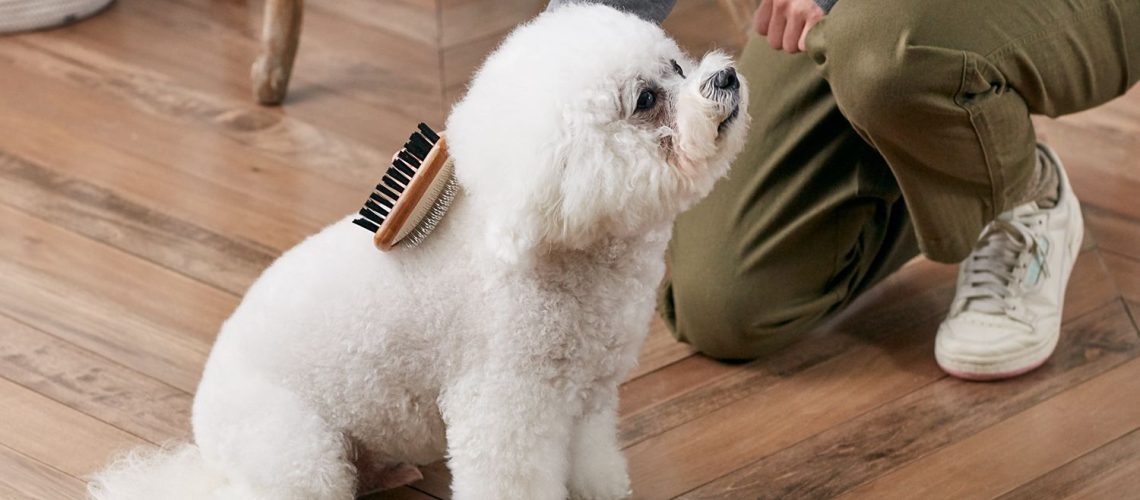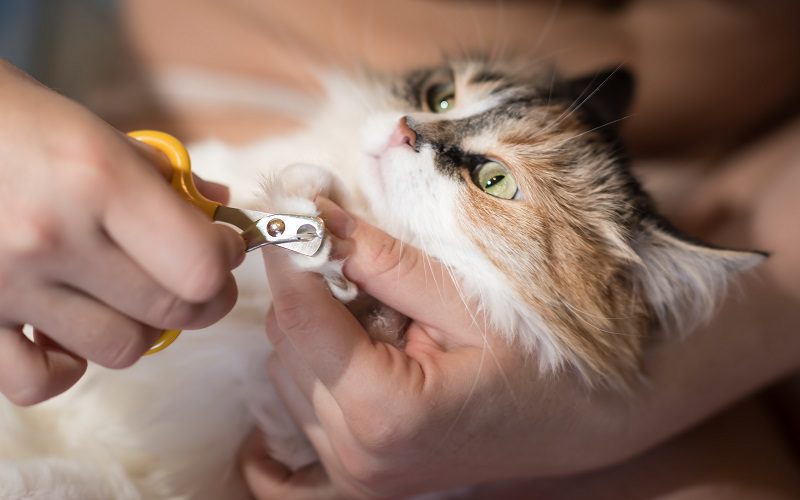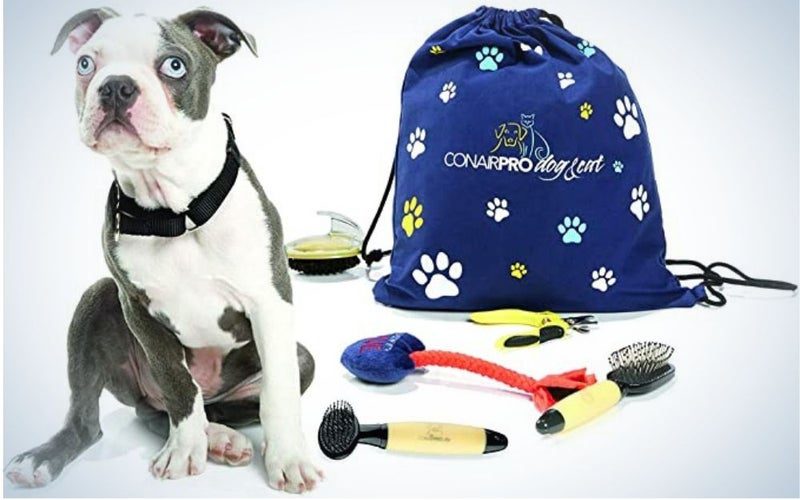In this guide, we will explore the various types of dog coats and provide valuable grooming tips to help you keep your furry friend looking their best.
Key Takeaways:
- Understanding your dog's coat type is essential for proper grooming and maintenance.
- Different coat types require different grooming techniques and tools.
- Regular brushing helps prevent matting, shedding, and keeps the coat healthy and shiny.
- Trimming your dog's nails regularly is important for their overall health and comfort.
- Bathing frequency should be based on your dog's specific needs and coat type to avoid drying out their skin.
Types of Dog Coats: Understanding Your Furry Friend's Fur
Dogs come in all shapes and sizes, and so do their coats. Just like humans, dogs have different types of hair that can vary in length, texture, and thickness. Understanding your dog's coat type is important for proper grooming and care. There are three main types of dog coats: short, medium, and long.
Short Coats:
Dogs with short coats have hair that is close to their body and doesn't require much maintenance. Breeds like Boxers, Beagles, and Dalmatians typically have short coats. These dogs shed less than other coat types but may still need regular brushing to remove loose hair.
Medium Coats:
Dogs with medium coats have hair that is longer than short-coated breeds but not as long as those with long coats. Breeds like Golden Retrievers, Cocker Spaniels, and Australian Shepherds often have medium-length fur. These dogs may require more frequent brushing to prevent matting and keep their coat looking its best.
Long Coats:
Dogs with long coats have hair that is fluffy and requires more maintenance. Breeds like Shih Tzus, Maltese, and Afghan Hounds are known for their luxurious long fur. These dogs need regular grooming to prevent tangles and matting. They may also require more frequent baths to keep their coat clean.
Understanding your dog's coat type can help you determine the best grooming routine for them. Whether they have a short, medium, or long coat, regular brushing and occasional baths will keep their fur healthy and shiny.
Determining Your Dog's Coat Type: A Guide for Pet Parents
As a pet parent, it's important to understand your dog's coat type to provide them with the proper care and grooming they need. Determining your dog's coat type can be done by examining their fur and understanding the characteristics of different coat types.
Short Coats:
Dogs with short coats have hair that is close to their body and doesn't require much maintenance. These dogs typically have smooth and shiny fur that lies flat against their skin. You can easily feel their skin when you run your hand over their coat. Breeds like Boxers, Beagles, and Dalmatians often have short coats.
Medium Coats:
Dogs with medium coats have hair that is longer than short-coated breeds but not as long as those with long coats. These dogs may have a double coat, which means they have a soft undercoat beneath a longer outer coat. Breeds like Golden Retrievers, Cocker Spaniels, and Australian Shepherds often have medium-length fur.
Long Coats:
Dogs with long coats have hair that is fluffy and requires more maintenance. These dogs often have a thick undercoat beneath their long outer coat. Breeds like Shih Tzus, Maltese, and Afghan Hounds are known for their luxurious long fur.
If you're unsure about your dog's coat type, consult with a veterinarian or professional groomer who can help you determine the best grooming routine for your furry friend.
Grooming Matters: Why Long or Thick-Coated Dogs Need Regular Care
If you own a long or thick-coated dog breed, regular grooming is essential to keep their fur healthy and prevent matting. The dense fur of these dogs can easily become tangled and matted if not properly cared for.
Regular brushing is the key to maintaining a long or thick coat. Brushing helps remove loose hair, prevents matting, and stimulates the skin to promote healthy hair growth. It also allows you to check for any skin issues or parasites that may be hiding beneath the fur.
In addition to regular brushing, long or thick-coated dogs may also require more frequent baths. This helps keep their coat clean and free from dirt, debris, and odors. However, it's important to use dog-specific shampoos and conditioners that are gentle on their skin.
If your dog's coat becomes severely matted or tangled, it may need professional grooming. A groomer can safely remove the mats without causing discomfort to your furry friend.
Remember, regular grooming not only keeps your dog looking their best but also contributes to their overall health and well-being. So make sure to set aside some time each week for grooming sessions with your long or thick-coated pup!
Essential Tools for Brushing Your Dog's Coat: A Must-Have Checklist
Brushing your dog's coat is an important part of their grooming routine. To effectively brush your dog's fur, you'll need a few essential tools. Here's a checklist of must-have tools for brushing your dog's coat:
Bristle Brush:
- A bristle brush is suitable for dogs with short coats.
- The bristles help remove loose hair and distribute natural oils throughout the coat.
- Choose a brush with soft bristles that won't irritate your dog's skin.
Slicker Brush:
- A slicker brush is ideal for dogs with medium to long coats.
- The fine, short wires on the brush help remove tangles and mats.
- Be gentle when using a slicker brush to avoid causing discomfort to your dog.
Comb:
- A comb is essential for all coat types as it helps detangle the fur and remove any remaining loose hair.
- Choose a comb with both wide and narrow teeth to accommodate different areas of your dog's body.
Undercoat Rake:
- If your dog has a double coat or thick undercoat, an undercoat rake can be useful in removing loose hair from the undercoat.
- The rake's long teeth penetrate deep into the coat without damaging the top layer of fur.
In addition to these tools, you may also need thinning shears for trimming specific areas, such as around the ears or paws. It's important to invest in high-quality grooming tools that are suitable for your dog's coat type. Regularly clean and maintain your brushes to ensure they remain effective.
By having these essential tools on hand, you'll be well-equipped to keep your furry friend's coat looking its best!
Brushing Basics: How Often to Groom Short and Long-Coated Dogs?
Grooming is an important part of caring for your dog's coat. The frequency at which you should groom your dog depends on their coat type. Here are some basic guidelines for grooming short and long-coated dogs:
Short Coats:
Dogs with short coats typically require less frequent grooming compared to those with longer coats. However, regular brushing is still necessary to remove loose hair and keep their coat healthy. Aim to brush your short-coated dog at least once a week.
Long Coats:
Dogs with long coats require more frequent grooming to prevent matting and tangles. Brushing should be done several times a week, if not daily, to maintain their coat's health and appearance. Regular brushing also helps distribute natural oils throughout the fur, keeping it shiny and smooth.
In addition to regular brushing, all dogs benefit from routine baths to keep their coat clean. However, excessive bathing can strip the natural oils from their skin, so it's important to find a balance based on your dog's individual needs.
Remember that grooming is not just about maintaining your dog's appearance but also about promoting their overall well-being. So make grooming sessions enjoyable for both you and your furry friend!
Why Do Some Dogs Shed More Than Others? Unraveling the Mystery
If you've ever owned a dog or spent time around them, you may have noticed that some dogs shed more than others. Shedding is a natural process in which old or damaged hair falls out to make way for new growth. The amount of shedding varies among different dog breeds and can be influenced by various factors.
Here are some reasons why some dogs shed more than others:
Breed Characteristics:
Different dog breeds have different coat types that determine how much they shed. Breeds like Labrador Retrievers, German Shepherds, and Huskies have double coats designed to protect them from extreme weather conditions. These breeds tend to shed more as they have an undercoat that sheds seasonally.
Seasonal Changes:
Many dogs experience seasonal shedding, also known as "blowing their coat." This shedding occurs in response to changes in daylight and temperature. Dogs may shed more heavily during spring and fall as they prepare for the upcoming seasons.
Health and Diet:
A dog's overall health and diet can affect their coat condition and shedding. Poor nutrition or underlying health issues can lead to excessive shedding. Ensuring your dog has a balanced diet and regular veterinary check-ups can help minimize shedding caused by health-related factors.
Grooming Practices:
Regular grooming practices, such as brushing and bathing, can help control shedding. Brushing helps remove loose hair before it ends up on your furniture or clothes. Additionally, keeping your dog's skin and coat healthy through proper grooming can reduce excessive shedding.
If you're concerned about your dog's shedding, consult with a veterinarian or professional groomer who can provide personalized advice based on your dog's breed, health, and specific needs.
Caring for Curls and Waves: Grooming Tips for Dogs with Curly or Wavy Coats
Dogs with curly or wavy coats require special care to keep their fur looking its best. Here are some grooming tips specifically tailored for dogs with curls or waves:
Brushing:
Regular brushing is essential for dogs with curly or wavy coats to prevent matting. Use a slicker brush or comb designed for their specific coat type. Start from the roots and gently work your way through the curls or waves, removing any tangles along the way.
Bathing:
Dogs with curly or wavy coats may require more frequent baths to keep their fur clean and free from debris. Use a gentle shampoo formulated for dogs with curly or wavy hair to maintain their coat's natural oils. Be sure to thoroughly rinse your dog's fur to prevent any residue from causing irritation.
Trimming:
Regular trimming can help manage the length of your dog's curls or waves and prevent them from becoming tangled. Focus on areas prone to matting, such as behind the ears and around the tail. If you're unsure about how to trim your dog's coat, consult with a professional groomer for guidance.
Moisturizing:
Dogs with curly or wavy coats may benefit from moisturizing products specifically designed for their hair type. These products can help keep their curls defined and reduce frizz. Consult with a veterinarian or professional groomer for recommendations on suitable moisturizers for your dog.
By following these grooming tips, you can ensure that your dog's curly or wavy coat remains healthy, tangle-free, and beautiful!
Nail Trimming Time: Signs that Indicate Your Dog Needs a Trim
Trimming your dog's nails is an important part of their grooming routine. Overgrown nails can be uncomfortable for dogs and may cause issues like pain, difficulty walking, or even infections. Here are some signs that indicate it's time to trim your dog's nails:
- Clicking Sound: If you hear a clicking sound when your dog walks on hard surfaces, it means their nails are too long.
- Nail Length: Check the length of your dog's nails visually. Ideally, the nails should not touch the ground when they stand or walk.
- Paw Discomfort: If your dog frequently licks or chews at their paws, it could be a sign of nail discomfort.
- Difficulty Walking: Overgrown nails can make it difficult for dogs to walk properly, causing them to limp or have an altered gait.
- Nail Curling: If your dog's nails start to curl or grow in a spiral shape, they are overdue for a trim.
If you notice any of these signs, it's time to trim your dog's nails. It's important to use proper nail clippers designed specifically for dogs and be cautious not to cut the quick, which is the sensitive area inside the nail that contains blood vessels and nerves. If you're unsure about trimming your dog's nails, consult with a veterinarian or professional groomer who can demonstrate the proper technique.
Regular nail trims not only keep your dog comfortable but also prevent potential injuries associated with overgrown nails. So keep an eye on those paws and give your furry friend a paw-dicure when needed!
Pampering Pups: How Regular Grooming Keeps Your Dog's Skin and Coat Healthy
Grooming is not just about making your dog look good; it plays a crucial role in maintaining their overall health and well-being. Regular grooming sessions offer several benefits for your dog's skin and coat:
Removal of Dead Hair:
Grooming helps remove dead hair from your dog's coat, preventing it from becoming matted or tangled
Grooming Tips for Different Dog Coat Types |
|
| Coat Type | Grooming Tips |
| Short Coat | Regular brushing to remove loose hair and occasional baths to keep the coat clean. |
| Long Coat | Daily brushing to prevent matting, regular trimming of the fur, and professional grooming as needed. |
| Curly Coat | Frequent brushing to prevent tangling, regular haircuts, and professional grooming every few months. |
How do you groom different types of dogs?Here are some tips for grooming dogs with curly and wavy coats: Regularly use a pin brush with rubber tips to prevent tangles and maintain a great-looking coat in between grooming sessions. Dogs with curly hair usually require frequent bathing. Specifically, poodles should be bathed approximately every three weeks. What are the 5 dog coat types?Almost all dog breeds can be categorized into one of the following coat types: double coats, silky coats, smooth coats, wire coats, and wool coats. How do I know what coat my dog has?A dog with a double coat has both an outer coat and an undercoat, with the undercoat being shorter and denser in texture. On the other hand, a single coated dog only has one coat without an undercoat. Dogs can have single or double coats regardless of their hair length or texture. Which dogs coat should never be shaved?It is not recommended to shave dogs like golden retrievers, German shepherds, Siberian huskies, or any breed that sheds large amounts of fur seasonally, as this fur is a natural part of their undercoat. What type of grooming does my dog need?Even if your dog doesn't require a significant haircut, their regular grooming routine should involve some trimming around their eyes, paws, ears, and genital area. This is important for keeping these areas clean and free from dirt, debris, and tangled hair, which can cause discomfort or hinder their regular activities. What does an unhealthy dog coat look like?Signs of an unhealthy coat in a dog include dry and fragile hair, excess shedding, a greasy or dusty look, bald patches, and a unpleasant oily odor. More Reads
Dr. Clara Bennett
Hello, fellow pet enthusiasts! I'm Dr. Clara Bennett, your go-to expert on all things pets. With a background in veterinary medicine and a passion for nutrition, I've spent years diving deep into the world of cats, dogs, birds, horses, and the products that keep them thriving. From the English countryside, I've witnessed the magic of animals and am here to share my knowledge, ensuring your pets receive the best care. Together, let's master the art of pet care!
All Posts »
Next Steps In Mastering Cat CareNext Steps In Mastering Dog CareJoin Our NewsletterSubscribe to receive our latest updates in your inbox! | |
















